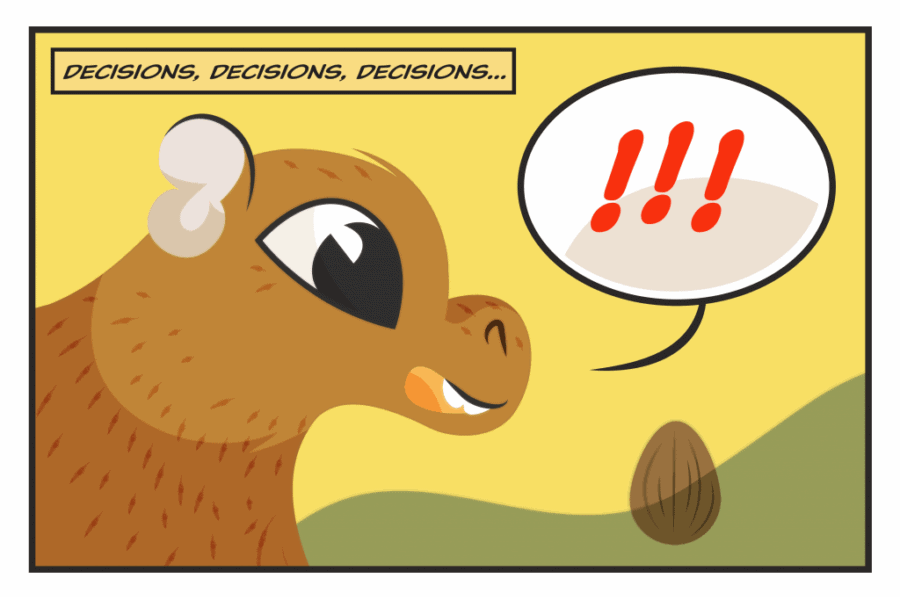Much like the squirrels and chipmunks in deciduous climates, there is a cat-sized creature in tropical regions that practices scatter hoarding – burying the seeds they find if they don’t eat them right away.
A team of University of Connecticut researchers recently dug into the seed decision-making process of a rodent in Costa Rica, called an agouti, in order to learn more about their seed dispersal activities. In forest ecosystems, these animals contribute substantially to seed survival and new tree growth.

It turns out that these cute “guinea pigs on stilts” are making a number of complex decisions when deciding to eat or scatter-hoard seeds.
Researchers pursued the investigation with a half-baked idea: Make polymer clay artificial seeds, or “cookies,” of various sizes, with peanuts hidden inside, and affix bright pink strings onto them. Then distribute the “cookies” and track their dispersal by locating the strings after the agoutis have carried them off.
Some of the cookies also had a coating of bitter-tasting tannins, so the researchers could learn if the agoutis have taste preferences.
The agoutis bit.
The researchers found that agoutis hid the cookies preferentially, depending on size. Since larger seeds require more energy to carry further for hoarding, the number of seeds dispersed furthest was fewer than that of small seeds eaten closer to the source.
They also found that cookies coated in bitter-tasting tannins didn’t deter the hungry rodents, which belong to the genus Dasyprocta.
“We weren’t sure if the agoutis would be interested in these artificial seeds,” says Kuprewicz, “but they were, and we were able to track what they did with them in exceptional detail.”
The findings, published in the journal Ecosphere, made waves in social media because of the clever use of creations dubbed “science cookies.”
Kuprewicz says the experiment provided valuable information about how mammals make seed dispersal decisions based on certain seed traits. “These choices can scale up dramatically to affect the species compositions of tropical forests and the animal and plant communities that live there,” she says.
The study was done in southern Costa Rica between August 2014 and 2015, on the grounds of the Wilson Botanical Garden. Funding for this work was provided by the Organization for Tropical Studies.
“Score! I’m going to hide this one so no one finds it!” (Erin Kuprewicz/UConn Video)

